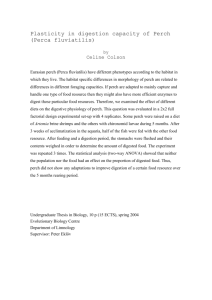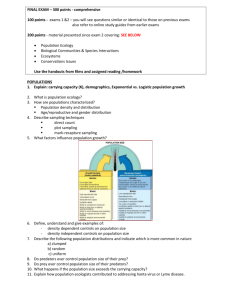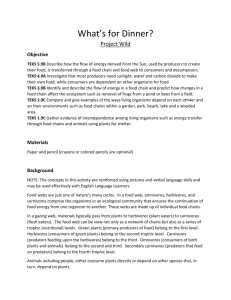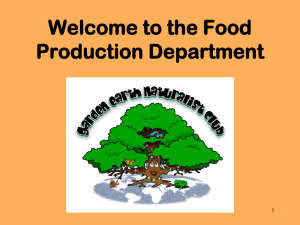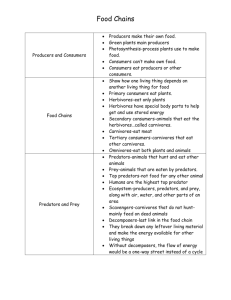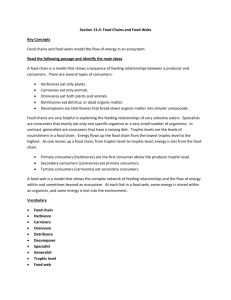Understanding Food Webs Worksheet/Article
advertisement
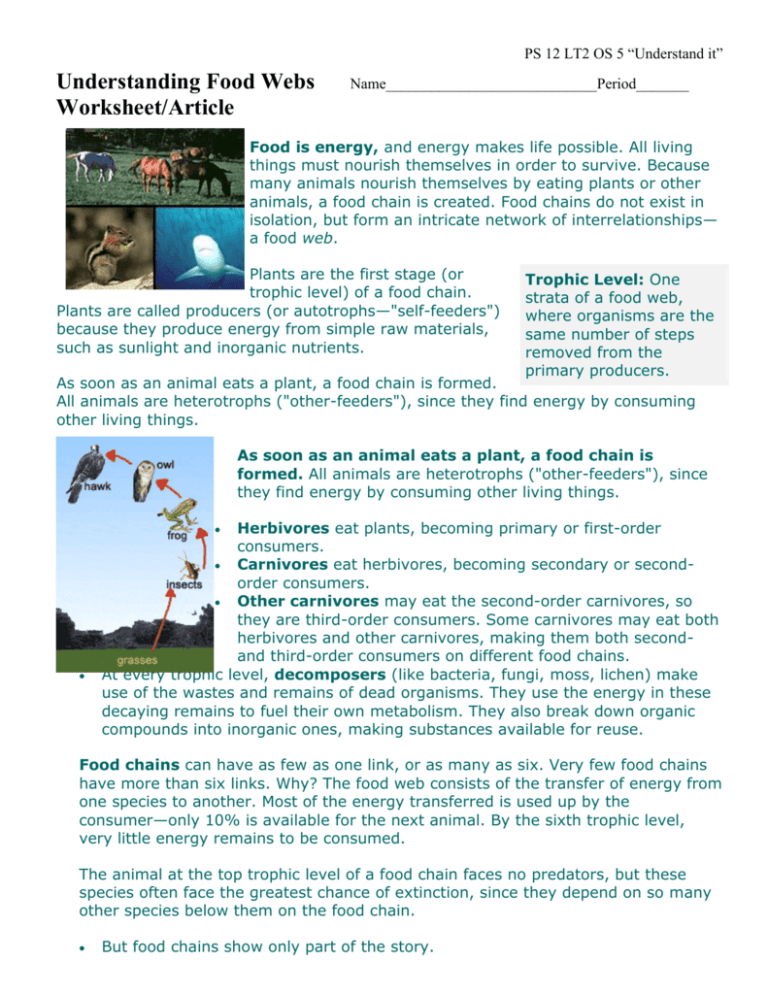
PS 12 LT2 OS 5 “Understand it” Understanding Food Webs Worksheet/Article Name____________________________Period_______ Food is energy, and energy makes life possible. All living things must nourish themselves in order to survive. Because many animals nourish themselves by eating plants or other animals, a food chain is created. Food chains do not exist in isolation, but form an intricate network of interrelationships— a food web. Plants are the first stage (or trophic level) of a food chain. Plants are called producers (or autotrophs—"self-feeders") because they produce energy from simple raw materials, such as sunlight and inorganic nutrients. Trophic Level: One strata of a food web, where organisms are the same number of steps removed from the primary producers. As soon as an animal eats a plant, a food chain is formed. All animals are heterotrophs ("other-feeders"), since they find energy by consuming other living things. As soon as an animal eats a plant, a food chain is formed. All animals are heterotrophs ("other-feeders"), since they find energy by consuming other living things. Herbivores eat plants, becoming primary or first-order consumers. Carnivores eat herbivores, becoming secondary or secondorder consumers. Other carnivores may eat the second-order carnivores, so they are third-order consumers. Some carnivores may eat both herbivores and other carnivores, making them both secondand third-order consumers on different food chains. At every trophic level, decomposers (like bacteria, fungi, moss, lichen) make use of the wastes and remains of dead organisms. They use the energy in these decaying remains to fuel their own metabolism. They also break down organic compounds into inorganic ones, making substances available for reuse. Food chains can have as few as one link, or as many as six. Very few food chains have more than six links. Why? The food web consists of the transfer of energy from one species to another. Most of the energy transferred is used up by the consumer—only 10% is available for the next animal. By the sixth trophic level, very little energy remains to be consumed. The animal at the top trophic level of a food chain faces no predators, but these species often face the greatest chance of extinction, since they depend on so many other species below them on the food chain. But food chains show only part of the story. PS 12 LT2 OS 5 “Understand it” Food chains are rarely simple linear progressions from one trophic level to the next. Instead, a single species, such as a hawk, might be a second-order consumer of field mice, a third-order consumer of frogs, and a fourth-order consumer of owls. This is a survival strategy for the hawk, so it doesn’t become too dependent on one species. It also creates complex interrelationships between species, and a food web is the result. In most food webs, the relationships are so intricate that ecologists are still discovering the ways that these dynamic networks work. A change in one species will affect the species that prey on it, but it can also trigger unexpected consequences in species with no direct link in the web. In a pond ecology, for example: 1. 2. 3. 4. 5. A pyramid of energy shows where the available energy lies in an ecosystem. The greatest amount is found in the plants; the least amount in the top-level consumers. Aquatic invertebrates and minnow eat algae Minnows and perch eat aquatic invertebrates Perch and bass eat minnows Great Blue Herons and bass eat perch Great Blue herons eat perch. In this food chain, there is a direct positive effect of the predator on their prey. If we increase the population size of the predator, we expect to see a decline in the population size of their prey (because more predators are eating the prey). Similarly, if we see a decrease in the population size of the predator, we would expect to see an increase in the population size of the prey (because there are fewer predators eating the prey). However, one species can also affect the population size of another species indirectly through its effect on a third species. For example, perch eat minnows, and minnows eat algae. If the population size of perch increases, what happens to algae? More perch means fewer minnows, and fewer minnows means more algae. Thus, perch have an indirect positive effect on algae. So each species is simultaneously being affected by a number of direct and indirect interactions. Retrieved from http://www.eduweb.com/portfolio/earthsystems/food/foodweb3.html

